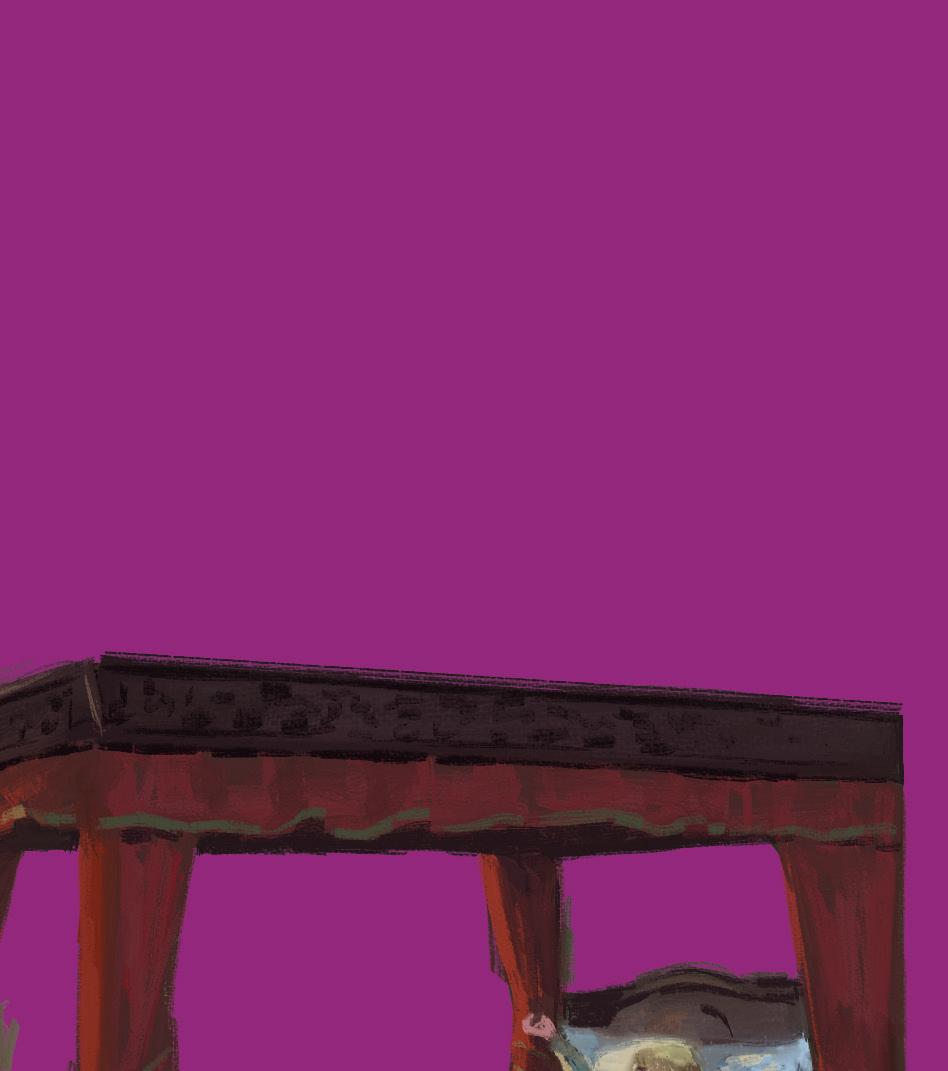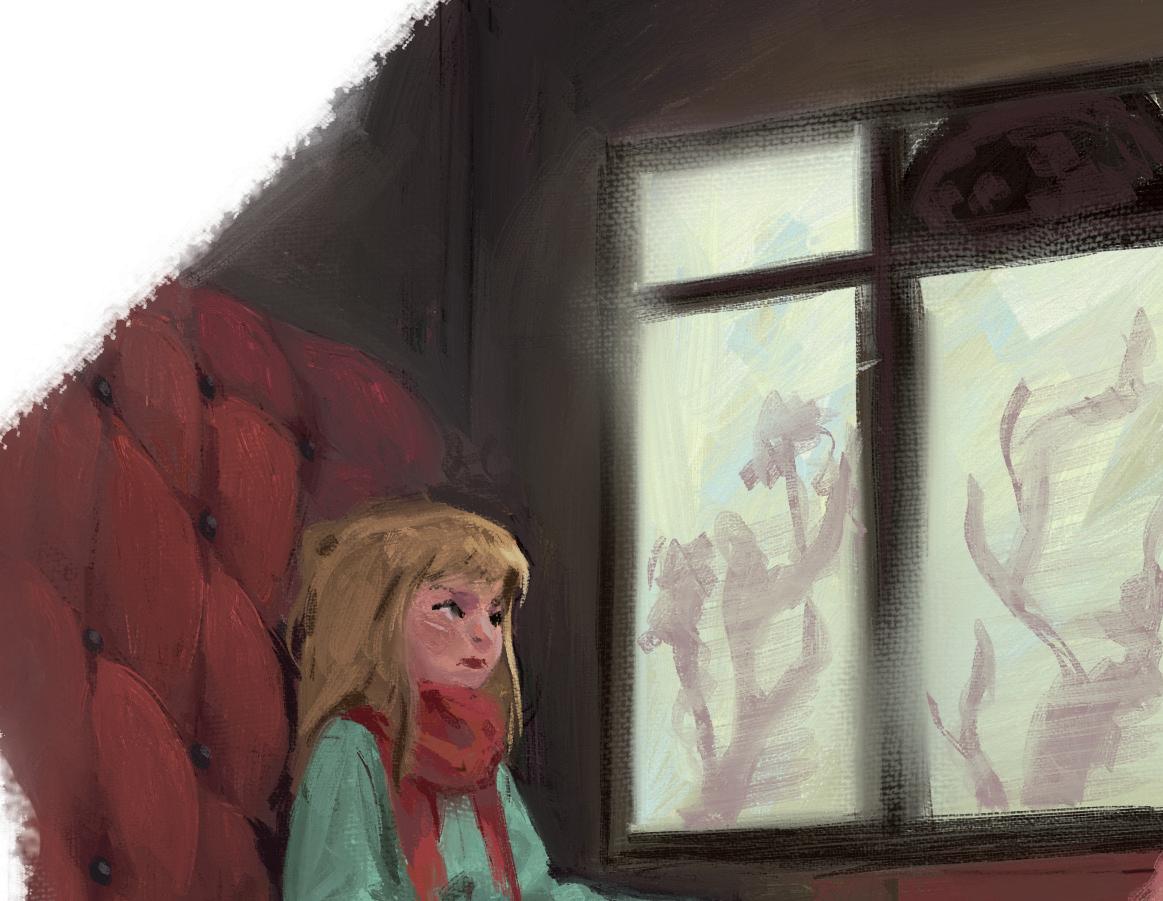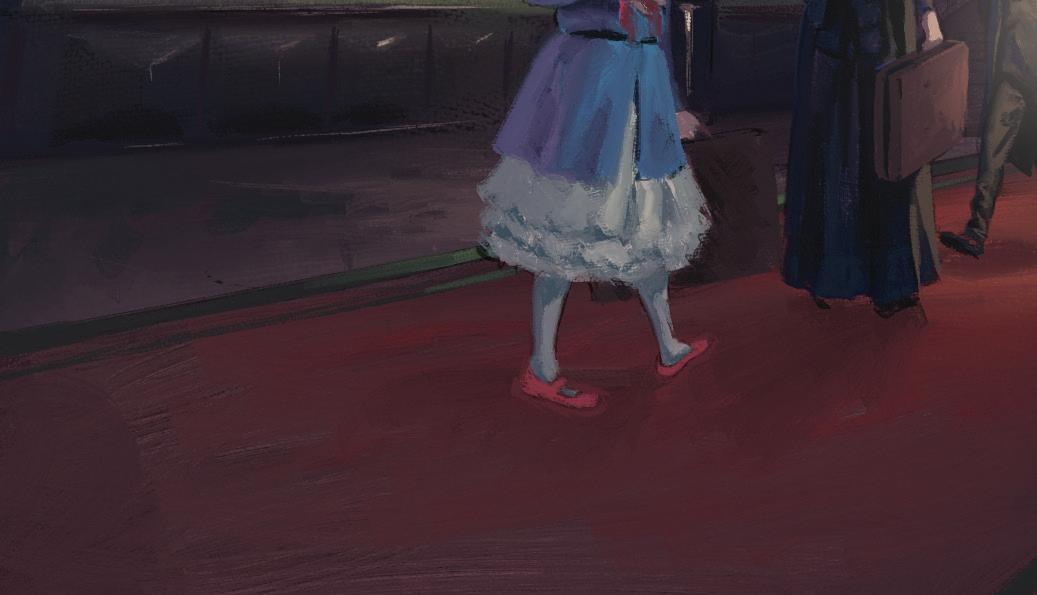










Frances Hodgson Burnett
Retold by Sorrel Pitts




© 2018 – StandFor
Editorial Director Antonio Rios
Editorial Manager Cayube Galas
Editorial Coordinator Ana Carolina Costa Lopes, Renata Lara de Moraes
Series Editor Nick Bullard
Editorial Assistant Nathalia Thomaz
Contributor Fernanda Valezini Ferreira
Production Manager Mariana Milani
Production Coordinator Marcelo Henrique Ferreira Fontes
Proofreader Nicole Irving
Art Manager Ricardo Borges
Art Coordinator Daniela Di Creddo Máximo Design Yan Comunicação
Cover Design
Yan Comunicação
Art Supervisor Patrícia De Michelis
Art Editors/Layout Lidiani Minoda
Illustrations Coordinator Márcia Berne
Illustrations Wagner de Souza
Operations Director and Reginaldo Soares Damasceno Print Production Manager
Dados Internacionais de Catalogação na Publicação (CIP) (Câmara Brasileira do Livro, SP, Brasil)
Burnett, Frances Hodgson
The secret garden : standfor graded readers : level 4 / Frances Hodgson Burnett ; retold by Sorrel Pitts ; illustrated by Wagner Souza. -- 1. ed. -São Paulo : FTD, 2018.
ISBN 978-85-96-01473-1 (aluno)
ISBN 978-85-96-01474-8 (professor)
1. Literatura infantojuvenil I. Pitts, Sorrel. II. Souza, Wagner. III. Título.
18-13084
CDD-028.5
Índices para catálogo sistemático:
1. Literatura infantil 028.5
2. Literatura infantojuvenil 028.5
All rights reserved. No part of this publication may be reproduced, stored in a retrieval system, or transmitted, in any form or by any means, electronic, mechanical, photocopying, recording, or otherwise, without the prior written permission of StandFor.
This book is sold subject to the condition that it shall not, by way of trade or otherwise, be lent, resold, hired out, or otherwise circulated without the publisher’s prior consent in any form of binding or cover than that in which it is published and without a similar condition being imposed on the subsequent purchaser.
Rua Rui Barbosa, 156 – Bela
Phone 0800 772 2300
Produção gráfica
Brasil – CEP 01326-010
Frances Hodgson Burnett was born in Manchester, England in 1849. Her father died when she was three, and, in 1865, her family moved to Knoxville, Tennessee. When she was still a teenager, she began to write and sell stories to magazines. In 1872, she married a doctor, and the couple went on to have two sons.
In 1877, she published her first novel, and went on to publish a number of very successful novels, including Little Lord Fauntleroy (1886). She began to travel back to England frequently, and for ten years lived in a large house in Kent. The gardens there helped her when she wrote The Secret Garden (1911). She died near New York in 1924.
Look at the picture on the cover of the book. Who is this child, do you think? Where is she? Why is the garden a secret, do you think? Personal answers.
What do you know about gardening? Do you have a garden at home? Do your friends have gardens? Do you think that gardening is an interesting thing to do? Personal answers.
Match the words with the pictures.




 1. path
2. plant
3. bush
4. orchard
1. path
2. plant
3. bush
4. orchard













Mary Lennox never saw much of her mother when she lived in India. She was cared for by her servant, and she usually stayed in a part of the house where few people came. She had teachers, but they usually left after a short time, because Mary was a selfish, spoiled, and difficult child, and she was often rude to them.

Mary’s father worked a lot, and he was usually too busy to see her. Her mother was very beautiful, and she liked to go to parties or spend time with other guests at the house. She didn’t want a child, and she told the servants to keep Mary away from her. If she heard Mary crying, she became angry.





One morning, when Mary was nine years old, she woke up to find her servant was not in her room and the house was very quiet. Mary waited for someone to come, but they did not. Another day passed and the little girl became hungry and thirsty. She went to the kitchen and found a bit of bread and drank some water; then she came back to her room and went back to sleep. She woke up many hours later when her bedroom door opened and a man came in.
“Good Lord, there is a child here!” he said. “Who is she?”
“I’m Mary Lennox,” Mary replied. “I fell asleep. Why is no one looking after me?”
“Because there’s no one here to care for you,” replied the man. “Oh, you poor child! The cholera has killed them all!”
A few weeks later, Mary was sitting in a cold, dirty, train carriage. Opposite her was a woman who wore a purple dress and a cheap hat. Her name was Mrs. Medlock and she was taking Mary to a place called Misselthwaite Manor in Yorkshire, England. Mary was going to live with her uncle, a man called Archibald Craven.
Mary did not like Mrs. Medlock – she rarely liked anybody – and Mrs. Medlock did not like Mary very much either, because she was thin and she had a spoiled face. Mrs. Medlock didn’t have much time for rude children like her. But they were traveling for a long time, and after several hours, Mrs. Medlock began to talk.
“What do you know about your uncle?” she asked. Mary looked at her and shook her head.
“Your mother and father never told you about him?”





“Well, you’re going to a strange and most of them are locked. Outside there’s a big park with lots of gardens. But that’s all. place,” said Mrs. Medlock. “The house is very big and dark and it’s next to the moor. It has nearly a hundred rooms in it, There’s nothing else.”




By now, Mary was becoming interested. Misselthwaite Manor sounded very different from India, and she liked to hear about anything that was new. But she tried not to look interested and her body stayed still, because this was her way.
“Well, what do you think of it?” asked Mrs. Medlock. “Nothing,” replied Mary. “I know nothing about this kind of place.”
“Aren’t you interested?”
Mary lifted her shoulders. “It doesn’t matter if I’m interested or not.”
“Well, that’s true,” said Mrs. Medlock. “It doesn’t. I don’t know what you’re going to do at Misselthwaite Manor; but Mr. Craven won’t worry about you.”
Then Mrs. Medlock stopped, remembering something. “Mr. Craven has a crooked back,” she said quickly.
“That didn’t help him when he was a child. He was an angry young man, and his money and the big house never helped him, either. But he was happy when he got married.”
Mary’s face turned, and Mrs. Medlock could see the girl’s sudden interest. “She was a lovely girl. Everyone said that she wanted his money,” Mrs. Medlock continued. “But I didn’t believe that. When she died…”
“She died?” said Mary quickly. Suddenly, she felt quite sorry for Mr. Craven with his crooked back.
“Yes, she did,” said Mrs. Medlock. “And after that he was never the same. He locks himself up in his rooms and never sees people. So don’t think that you’ll see him, because you probably won’t. You’ll have to play alone.”
It was late evening when the train finally came into the station. “Here we are,” said Mrs. Medlock. “There’s the carriage to take us across the moor.”
The two of them stepped down from the train. Behind the station, Mary saw a man waiting by a carriage with horses. She and Mrs. Medlock climbed into it.
“What’s a moor?” Mary asked Mrs. Medlock, when the carriage started moving.
“If you wait ten minutes, you’ll see,” Mrs. Medlock replied.
Soon after, the horses began to slow. Mary looked out the window to see a group of small white houses, and then there was just wide, black, land on both sides of the carriage, and the sound of the wind blowing.
“We’re on the moor now,” said Mrs. Medlock. “It’s just wild land where nothing grows but gorse. Only horses and sheep live on it.”
To Mary it felt like a great dark sea. “I don’t like it, I don’t like it,” she thought. “Will we ever arrive at Misselthwaite Manor?”

Then Mary suddenly saw a light in front of them. At the same time, Mrs. Medlock said, “We’re nearly home.”
The carriage passed through a pair of tall gates, but then traveled for another fifteen minutes, before arriving in front of a very big old house with many dark windows. Mrs. Medlock took her through the high front door into a big, dark, hall, which was full of paintings. Mary felt very small and strange as she stood there. An old man in black clothes was waiting for them by the door.
“You must take her to her room,” he said. “Mr. Craven doesn’t want to see her. He’s going to London in the morning.”




After that, Mary was taken upstairs and along a very long corridor, and then another corridor, until they arrived in a large room with a fire and some dinner on a table.
“Well, here you are,” said Mrs. Medlock. “You’ll live in this room and the next one, and you must stay in them. Don’t go looking around the house!”
When Mary opened her eyes the next morning, a girl was lighting the fire.
“Hello, I’m Martha,” the girl said, and she turned her head and smiled at Mary.
“Are you going to be my servant?” asked Mary in her spoiled, Indian way.
Martha turned back to the fire. “I work for Mrs. Medlock,” she said. “But I’ll care for you sometimes, yes.”
Mary moved to the side of the bed. “Are you going to dress me?”
Martha threw back her head and laughed when she heard this. “You can do that!” she said.
“No, I can’t. My servant always dressed me in India,” replied Mary.
“Well, you’ll have to learn to do it here,” said Martha. “I’ll show you. Really! I have ten brothers and sisters and they all learned to dress when they were very small!” Then the girl stood up and she put some hot porridge down in front of Mary, who gave it a strange look.
“I’m not very hungry,” she said.
“Put some sugar on it,” Martha replied. “It’s good.”



So Mary put some sugar on the porridge and ate a little of it. Then Martha said, “Why don’t you go outside and look at the gardens this morning?”
“Who will go with me?” Mary asked.

“You’ll go alone,” said Martha. “My brother Dickon is always alone. He plays for hours and hours on the moor and he only has the animals for friends. All the birds and other animals on the moor know him.”
Mary looked around her. There was nothing to do in the house, and she was interested in Dickon and the animals and birds.
“OK,” she said.


Martha found her coat and hat and showed her the way to the front door. “If you go down that path you’ll come to the gardens,” she said. “One of them is locked up. Nobody has been in it for ten years and Mr. Craven



hates it. Right, I must go. Mrs. Medlock’s calling me.”
After Martha left, Mary walked down the long path until she came to a large garden with grass in the middle. There were flower beds around the grass, but it was winter, and the dirt was dark and gray. Nothing was growing in them.
She walked on past the grass and, after a few more minutes, she arrived at a high wall covered in green ivy. In the middle of the ivy was a wooden door.

An old man walked through the door with a spade over his shoulder. He looked surprised when he saw Mary, and then touched his hand to his hat.
“What is this place?” Mary asked.
“These are the kitchen gardens,” he replied. “It’s where we grow our fruit and vegetables.”
“Can I go in them?”
“Yes, but there’s nothing to see.”
But Mary went running off through the gate to see large squares of dark dirt between some glass houses with plants inside them, and then, after the next wooden door, an orchard of fruit trees. This was followed by another wall, which was covered with ivy; but there was no door in this one.


At that moment, Mary heard singing. She looked up to see a bird with a red chest at the top of a tree above the wall. She smiled because his song was so happy. Suddenly, she did not feel so alone.



“Martha talked about a secret garden. Could this bird be in it?” Mary thought. Then the bird suddenly flew into the air and back over the walls. Quickly, Mary followed him, until she saw the old man again.
“I’ve been to the orchard,” she said. “But there was no door into the next garden.”
“What garden?” he said, and he stopped using his spade for a moment.
“The one with the trees,” she replied. “There was a bird with a red chest in it. He was singing.”
When he heard this, the old man suddenly smiled. Then he turned his head and made a soft sound. Suddenly the little bird flew down by his feet.
“Where have you been?” the old man asked the bird. “This is the first time I’ve seen you this spring.”
“What kind of bird is it?” asked Mary.
“Don’t you know?” he replied. “He’s a robin. They’re the friendliest birds. Are you the little girl from India?”
Mary nodded.
“I’m Ben Weatherstaff,” the old man said. Suddenly, the robin flew up in the air again and back towards the tall trees.
“He’s flown over the wall!” said Mary, “Into the garden with no door!”
“He lives there,” said Ben Weatherstaff.
“Is that the secret garden?” asked Mary. “I’d like to see it. There must be a door somewhere.”
“There’s no door that you will find, and don’t you go looking for it,” said Ben Weatherstaff angrily. Then he lifted his spade onto his shoulder and quickly walked away.












Each morning after breakfast, Mary went out to look around the gardens. She did not know it, but this exercise was the best thing for her, because when she ran along the paths and through the orchards, her blood moved quickly, and color came into her face.



And at last she began to understand about feeling hungry. “You’re looking well this morning,” said Martha one morning, as Mary quickly finished her bowl of porridge.
“It tastes nice today,” said Mary, feeling surprised.
“It’s the moor air,” replied Martha. “It’s making you hungry.”







After the death of her parents, Mary Lennox, a selfish, spoiled child, is sent to live with her uncle in an enormous old house in the north of England.
At first Mary finds life very difficult; she has no friends and nothing to do. But as time passes, she begins to make friends, and to discover the secrets of the house – and its secret garden.
StandFor Graded Readers provide a range of engaging reading materials for learners of English. Carefully graded by level, the series includes retellings of great classics, and informative, factual titles.
Level 1 | 380 Headwords
Level 2 | 580 Headwords
Level 3 | 800 Headwords
Level 4 | 1000 Headwords
Level 5 | 1350 Headwords









